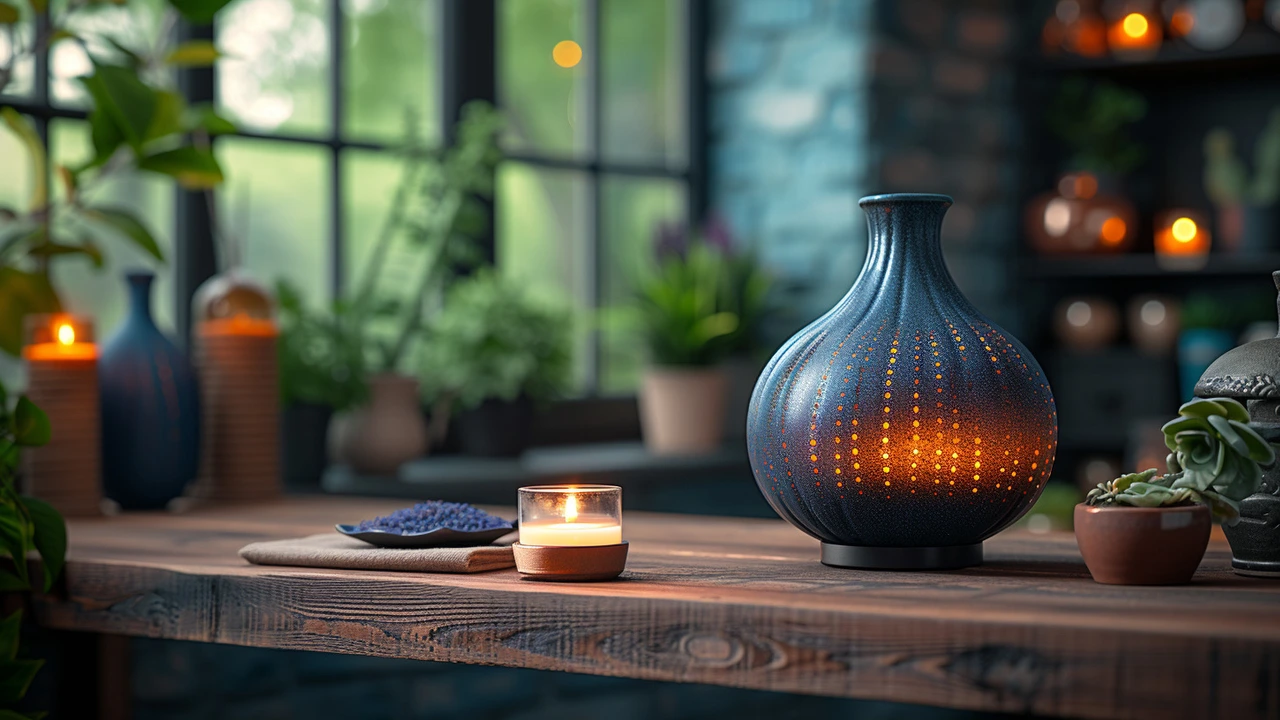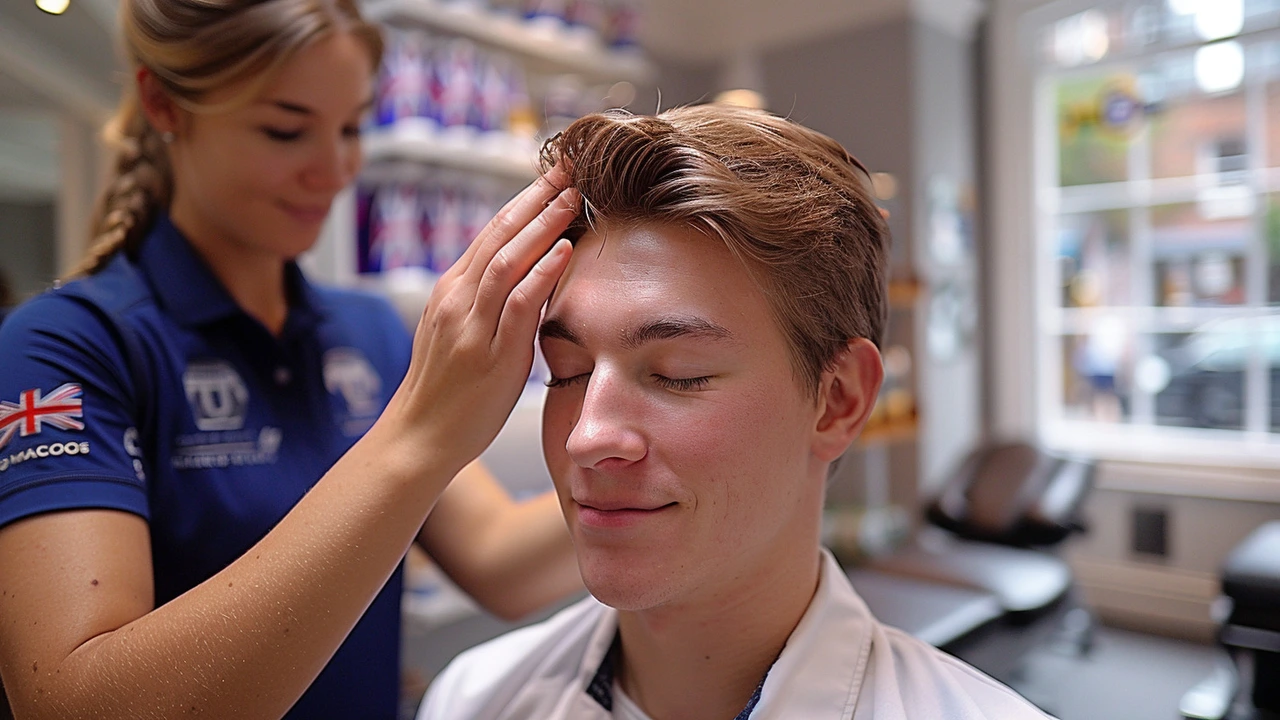Swedish Massage: Your Ideal Stress Relief After a Long Day
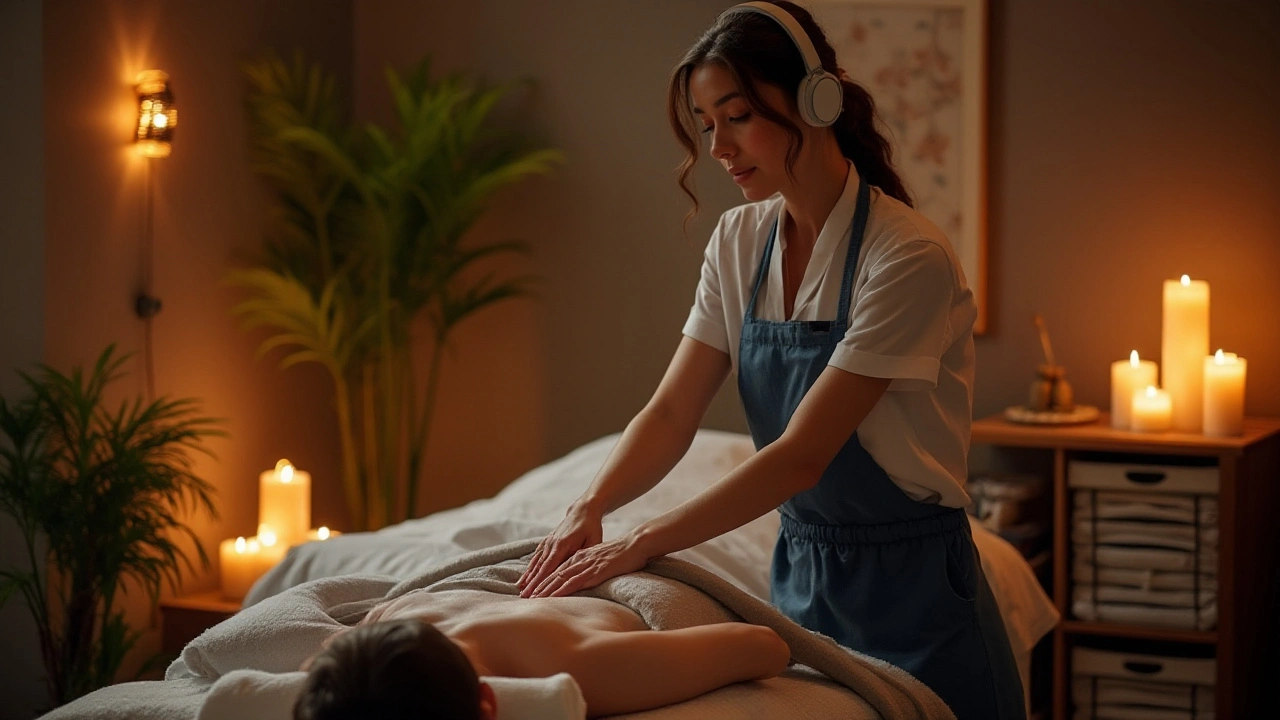
Imagine sinking into a blissful state of relaxation as skilled hands work out the tension accumulated over the day. This is the magic of a Swedish massage. A gentle yet effective technique, it’s designed to melt away stress, improve circulation, and give your muscles a much-needed break.
Originating from Sweden, this form of massage has become a favorite worldwide for its numerous benefits. But what exactly makes Swedish massage so special? And how can you make the most out of your session?
By understanding the different techniques used—like long, gliding strokes and kneading—and by being well-prepared, you can transform a simple massage session into an extraordinary experience. Whether you're a seasoned massage-goer or a first-timer, there's always something new to learn about this wonderful therapy.
In this guide, we'll explore the ins and outs of Swedish massage, including its many benefits and some helpful tips to ensure you get the most out of your time on the table. Ready to dive in and discover how to end your day with the ultimate relaxation?
- Introduction to Swedish Massage
- Techniques and Methods
- Benefits of Swedish Massage
- How to Prepare for Your Massage
- Post-Massage Tips for Prolonging Relaxation
Introduction to Swedish Massage
Swedish massage is one of the most popular and well-known types of massage, beloved by many for its relaxing and therapeutic effects. This type of massage was developed in the early 19th century by a man named Henrik Ling, who was a Swedish physiologist and fencing instructor. Ling wanted to combine the health benefits of gymnastics and physical therapy, and Swedish massage was born from that pursuit.
The main goal of a Swedish massage is to relax the entire body. This is achieved through long, gliding strokes in the direction of blood returning to the heart. But Swedish massage goes beyond mere relaxation. It's also exceptionally beneficial for increasing the level of oxygen in the blood, decreasing muscle toxins, improving circulation and flexibility, while easing tension.
Five main techniques form the backbone of Swedish massage: effleurage, petrissage, friction, percussion, and vibration. Effleurage involves long, sweeping strokes, while petrissage consists of kneading and rolling the muscles. Friction uses deep, circular movements to work on the deeper layers of muscle, and percussion involves light, rhythmic tapping. Finally, vibration and shaking movements help to release tension even further.
According to the American Massage Therapy Association, massage can also reduce the heart rate and lower blood pressure. They state that regular massage can significantly reduce chronic pain and improve mood and mental outlook.
“Massage therapy can enhance one’s overall sense of emotional and physical well-being,” says the AMTA.
Swedish massage is not just for the physically active or those recovering from injury. It's ideal for anyone who needs to unwind after a stressful day, which makes it an excellent choice for regular self-care. Whether you're at a spa, a wellness center, or enjoying an in-home session, the benefits of Swedish massage are vast and accessible.
Techniques and Methods
The Swedish massage is renowned for its ability to provide soothing and therapeutic relief. It uses a range of techniques designed to target various layers of muscle and connective tissue. These techniques primarily include effleurage, petrissage, friction, tapotement, and vibration. Each plays a unique role in promoting relaxation and reducing muscle tension.
Effleurage involves long, sweeping strokes that glide along the surface of the skin. This technique not only warms up the muscles but also sets the tone for a deeper, more intensive massage. The strokes are generally light to moderate in pressure, allowing the massage therapist to assess the muscle tension and identify specific areas that need attention. Effleurage is typically used both in the beginning and end of the massage session.
Petrissage, often described as kneading, focuses on deeper muscle manipulation. Think of it as kneading dough. The therapist uses their hands to lift, roll, and squeeze the muscles, promoting improved blood circulation and relief from deep muscle tension. It's a technique that can feel intense yet incredibly relieving, especially in areas where the muscles are particularly tight or knotted.
Friction is a more targeted technique that applies more pressure to specific areas. The massage therapist uses their fingertips, knuckles, or elbows to create deep, circular movements. This helps to break down adhesions and scar tissue within muscles, enhancing flexibility and reducing pain. While it may be slightly uncomfortable at times, it can be highly effective for chronic pain conditions.
Tapotement, or rhythmic tapping, involves a series of rapid, percussive movements administered with the edge of the hand, fingertips, or cupped hands. This technique stimulates the nerves, muscles, and circulatory system. It’s often used to invigorate the body and can be particularly beneficial for athletes or those needing a quick boost of energy. Imagine a drumming sensation that's both rhythmic and energizing.
Finally, vibration technique involves the therapist using rapid, shaking movements to stimulate tissues deep within the muscle layers. This helps to loosen the muscles and increase blood flow. Although not as commonly employed as the other techniques, it can be particularly useful for specific muscle groups that need extra attention.
Collectively, these techniques make the Swedish massage an incredibly versatile and effective form of therapy. Together, they provide a comprehensive approach that not only targets physical ailments but also promotes overall well-being. As a result, many people find it to be an ideal way to unwind after a long day.
According to the American Massage Therapy Association (AMTA), “Regular massage can help reduce stress, relieve muscle tension, and improve overall mood.”
Each therapist may have their unique style and approach, but the core techniques of Swedish massage remain the same. So the next time you find yourself feeling overwhelmed or physically drained, remember the benefits that these time-honored techniques can offer. Whether you seek out a professional or learn some basic moves to try at home, these methods can become a vital part of your self-care routine.
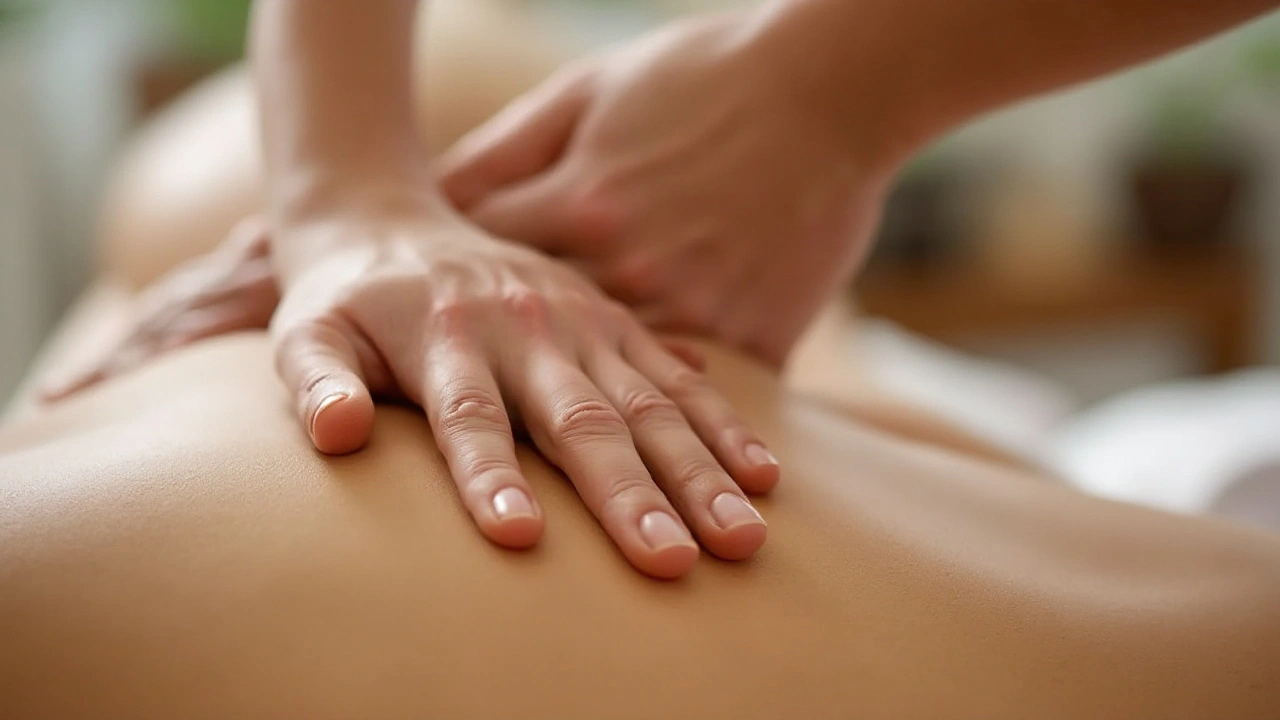
Benefits of Swedish Massage
After a long day, a Swedish massage can be the perfect remedy for your frayed nerves. But did you know that its benefits go well beyond immediate relaxation? This time-honored technique offers physical, mental, and even emotional advantages that make it a superb choice for anyone looking to unwind.
Firstly, one of the most significant benefits is the improvement in blood circulation. The long, gliding strokes, known as effleurage, help to increase blood flow throughout your body. Better circulation means more oxygen and nutrients are delivered to your muscles and organs, aiding in recovery and boosting overall health.
Another major benefit is muscle relaxation. If you’re prone to muscle tension or stiffness, a Swedish massage can do wonders. Techniques like kneading and friction are designed to work out knots and tension areas, providing relief from aches and pains. This is especially beneficial for those who work in physically demanding jobs or spend long hours at a desk.
Let’s talk about stress reduction, a common concern in today’s fast-paced world. A Swedish massage lowers cortisol levels, the hormone associated with stress. Reduced cortisol can lead to better mood, improved digestion, and enhanced immune function. The serene environment of a massage session also helps in de-stressing your mind, making you feel more balanced and peaceful.
There’s also evidence suggesting that Swedish massage helps in the management of chronic pain conditions. According to a study published in the Journal of Pain, participants who received regular Swedish massages reported a significant reduction in pain and improved mobility. The combination of mechanical pressure and increased circulation can be incredibly beneficial for conditions like arthritis and fibromyalgia.
Another noteworthy benefit is its impact on sleep. A good massage session helps in releasing tension from your body, making it easier to fall and stay asleep. This improved sleep quality can make a huge difference in your daily life, affecting everything from your mood to your productivity.
For those who engage in regular physical activities, Swedish massage aids in muscle recovery. By increasing circulation and reducing muscle soreness, it helps athletes and fitness enthusiasts to bounce back quicker from their workouts. It also improves flexibility, which is critical for avoiding injuries.
Last but not least, Swedish massage can enhance your emotional well-being. The act of being cared for and the physical touch involved in the massage releases oxytocin, often referred to as the “love hormone.” This can improve your sense of connection and happiness, contributing to your overall emotional health.
So, the next time you feel overwhelmed or physically drained, consider booking a Swedish massage. Not only will it help you relax, but it will also provide a wide range of health benefits that will improve your quality of life.
How to Prepare for Your Massage
Preparing for a Swedish massage can be almost as relaxing as the session itself, setting the stage for a soothing experience. To help your body and mind unwind completely, follow these simple yet effective tips.
First, think about what you’re wearing. It’s best to choose loose, comfortable clothing. This makes it easier to undress and redress before and after your session. If you're heading directly from work, bring a change of clothes so you can switch into something more relaxing.
Hydration is key! Make sure you drink plenty of water before and after your massage. Water helps to flush out the toxins that a massage can release from your muscles. Avoid caffeine or alcohol as they can dehydrate you and might even make it harder to relax.
Arrive a little early to your appointment. This gives you time to fill out any necessary paperwork and discuss any specific concerns or areas you'd like your therapist to focus on. Plus, arriving early helps you mentally transition from a busy day to a peaceful state of mind.
Taking a warm shower before your appointment can do wonders. It relaxes your muscles, making it easier for your therapist to work out the knots and tension. Not to mention, it helps to keep you fresh and clean, enhancing the overall experience.
Communication is essential. Don't hesitate to discuss any allergies or skin sensitivities you may have. This allows your therapist to choose the right oils and lotions for you. Sharing this information ensures your session is as comfortable and effective as possible.
Try to skip a heavy meal before your massage. While it’s good to eat something light to keep your energy levels up, a full stomach can make it uncomfortable to lie on the massage table, especially lying face down for an extended period.
Setting your phone to silent or turning it off can also contribute to a more peaceful experience. The point is to disconnect from daily stressors and fully immerse yourself in relaxation. Consider it a small step that pays off big in terms of your overall comfort.
Take deep, calming breaths as you wait for your massage session to begin. This can help reduce anxiety and prepare your mind and body for a state of relaxation. It’s surprising how much impact breathing can have on your overall experience.
"The quality of our breath expresses our inner feelings." - Yogi Ramacharaka
If you're new to massages or even to Swedish massages specifically, doing a bit of research can be beneficial. Knowing what to expect and understanding various techniques can make you feel more at ease. Your relaxation should start the moment you step into that tranquil, serene setting.
Follow these steps, and you'll be primed for a relaxing, rejuvenating experience that will help you end your long day on a high note. Getting the most from your Swedish massage really is about setting the stage for comfort and relaxation as soon as you walk in the door.
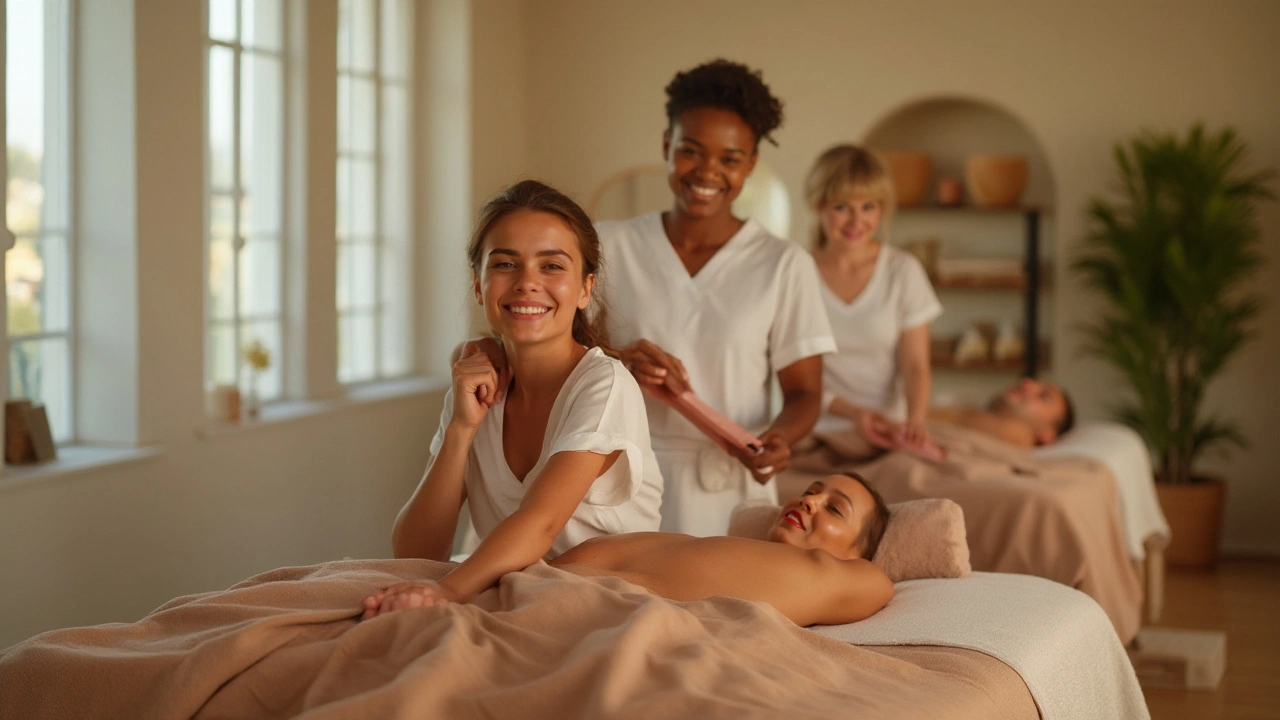
Post-Massage Tips for Prolonging Relaxation
So, you’ve just experienced a Swedish massage, and you're feeling gloriously relaxed. But what happens next? The good news is that there are a number of strategies to help you extend that blissful feeling long after you've left the massage table. By incorporating a few post-massage practices into your routine, you can fully savor the benefits and keep stress at bay.
First and foremost, it’s crucial to hydrate. After a massage, your body needs water to flush out toxins that have been released from your muscles. Drink plenty of water throughout the day. Not only does this help with detoxification, but it also keeps your muscles hydrated, reducing the chance of feeling sore later.
Another effective way to prolong the relaxation is to take a warm bath. Adding Epsom salts can further enhance the experience by helping to ease muscle tension and reduce any soreness you might feel. Many massage therapists recommend soaking in a salt bath for around 20 minutes, which can also help to calm your mind.
Consider adopting some gentle stretching exercises into your post-massage routine. This helps to keep your muscles flexible and relaxed. Focus on areas that hold a lot of tension, such as your neck, shoulders, and lower back. Gentle yoga practices like child’s pose or cat-cow stretches can be highly beneficial.
Maintain the serene environment you experienced during your massage by listening to calming music or surrounding yourself with soothing scents, like lavender or chamomile. Aromatherapy can play a significant role in enhancing relaxation. Using a diffuser or even lighting a scented candle can help to recreate that peaceful spa atmosphere at home.
It’s also crucial to pay attention to your posture for the rest of the day. Slouching or bad body mechanics can reintroduce tension into your muscles. Use a lumbar support pillow if you’re sitting, and try to maintain an upright, relaxed stance if you’re standing.
Avoid strenuous activities and heavy lifting immediately after your massage. Your body needs time to recover and integrate the work done during the session. Instead, opt for light activities like walking or gentle household chores.
According to the Mayo Clinic, "Adequate time for rest and hydration is crucial to help your body recover and assimilate the benefits of a therapeutic massage."
Finally, pay attention to your diet. After a massage, your body is in a state of detox. Eating light, nutritious meals can support this process. Think fresh fruits, vegetables, and lean proteins. Avoid heavy, rich foods that can make you feel sluggish.
By integrating these practices into your post-massage routine, you can maximize the benefits of a Swedish massage and maintain that wonderful, relaxed feeling much longer.

